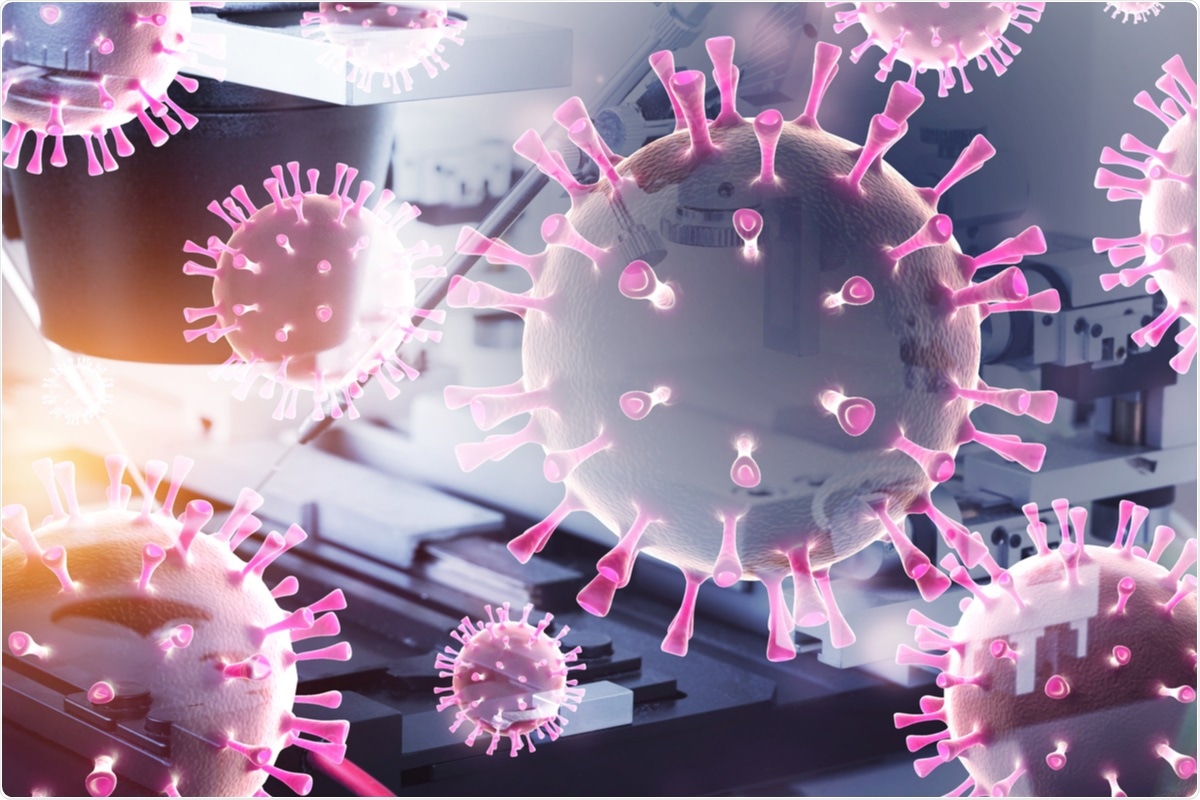The emergence of the severe acute respiratory syndrome coronavirus 2 (SARS-CoV-2) was first reported in Wuhan, China, in 2019. Subsequently, the global outbreak of the novel virus was announced to be a pandemic by the World Health Organization (WHO) in March 2020. The pandemic is popularly known as coronavirus disease 2019 (COVID-19). SARS-CoV-2 is extremely virulent with a high rate of transmission. To date, it has claimed more than 4.71 million lives worldwide.
 Study: Applications of nanomaterials in COVID-19 pandemic. Image Credit: Billion Photos/ Shutterstock
Study: Applications of nanomaterials in COVID-19 pandemic. Image Credit: Billion Photos/ Shutterstock
Nanotechnology has been widely applied in biomedicine, especially for controlled drug delivery, diagnosis, and treatment of various diseases. In response to the current pandemic, many laboratories around the world applied this technology. The applications include developing facemasks bearing filters coated with nanomaterials, vaccines with nanometer adjuvants, affordable and rapid COVID-19 diagnostic kits.
A new review published in Rare Metals has focused on the applications of nanomaterials to fight the ongoing COVID-19 pandemic. This article revealed that nanomaterials help to prevent, diagnose, and provide treatment to SARS-CoV-2 infected individuals.
Nanomaterials and virus prevention
Scientists revealed that typically SARS-CoV-2 is transmitted via droplets of an infected person when they cough or sneeze. Sometimes, these droplets adhere to surrounding surfaces like doorknobs and onto healthcare workers' protective gear. A study reported that SARS-CoV-2 remains active for seven days on a facemask worn by an infected person. When healthy individuals touch these contaminated spots, they are at a high risk of COVID-19 infection.
Nanotechnology has helped develop facemasks with dual functions, i.e., protection against SARS-CoV-2 virus and excellent self-disinfection properties. Also, the use of nanomaterials in the development of surface disinfectants with self-disinfection properties has been immensely beneficial for hospital and healthcare settings.
Previous studies have revealed metals such as silver and copper have excellent antiviral properties. As expected, silver and copper nanomaterials showed high surface-to-volume ratios and improved biological functions. Similarly, gold nanoparticles can deactivate viruses and bacteria by catalyzing specific reactions to generate reactive oxygen species (ROS) under light irradiation with a specific wavelength.
Scientists have also developed non-metallic nanomaterials, e.g., hydrophobic graphene nanomaterial, for facemasks with self-disinfection properties. Additionally, nanoscale TiO2 fiber coating enhances the filtering property of facemasks. Inorganic nanoclusters (NCs) possess intrinsic bactericidal and antiviral activity to minimize the accumulation of harmful pathogens in the nanofiber pores.
Nanomaterials and COVID-19 diagnosis
Nanomaterials, especially nanobiosensors, can augment the quality and efficiency of the detection process. The rapid detection and immediate response characteristics make these sensors ideal for medical applications. Currently, the detection of COVID-19 is critical for major preventative applications.
Scientists have developed a COVID-19 biosensor system based on nanomaterials combined with one-step reverse transcription loop-mediated isothermal amplification. This biosensor can successfully diagnose COVID-19. Another biosensor device, based on a field-effect transistor (FET), can efficiently detect the COVID-19 virus in medical samples. The latter class of biosensors has been synthesized from graphene nanosheets, modified with the COVID-19 spike antibody, and can efficiently identify the COVID-19 spike protein.
Recently, scientists developed a novel biosensor by coating graphene sheets of FET with an antibody to the COVID-19 spike protein. The limit of detection for the COVID-19 target antigenic protein is 1 fg·ml−1. As this is significantly lower than traditional detection concentrations, the difficulty of sampling is immensely reduced. Another group of researchers developed a bioassay based on gold nanoparticles coated with thiol-modified antisense oligonucleotides. This can accurately diagnose COVID-19 in a few minutes.
Nanoparticles in COVID-19 Vaccines
Vaccines trigger the immune system via the introduction of antigens. Conventional vaccines possess many challenges, such as low blood flow stability and the inability to elicit a sustained and adequate immune response. Vaccines that produce higher levels of antibodies are regarded as effective, but in most cases, these vaccines also have higher side effects.
Recently, nanoparticle vaccines have been regarded to be good alternatives to traditional vaccines. The main advantages of nanomaterial-based vaccines are controllable drug kinetics, high payloads, and high stability. Also, in the DNA- and RNA-based vaccines, an additional vector is required. Scientists revealed that vaccine adjuvants derived from nanoparticles possess many advantageous properties, including slow-release, robust humoral and cellular responses induction and improved vaccine efficacy.
Sinopharm, a Pharmaceutical Group in China, in collaboration with the Wuhan Institute of Biological Products, used aluminum salts, graphene, silica nanoparticles, gold nanoparticles, liposomes, and polymerized nanoparticles as vaccine adjuvants. Moderna used lipid encapsulation for the development of their COVID-19 vaccine. Based on immunogenicity, several studies have indicated that gold nanoparticles, spike protein nanoparticles, and hollow polymeric nanoparticles could effectively induce a human immune response against coronaviruses.
Nanomaterials and antiviral drugs
Nanomaterials, e.g., liposomes and PLGA nanoparticles, can be used to encapsulate antiviral drugs, which promote long-term circulation and sustained release of the drugs. This technology improves the therapeutic effect. Researchers believe that nanomaterials could be used to deliver angiogenic factors in combination with antiviral drugs to treat COVID-19 disease. Nanocarriers could significantly transport drugs with greater efficiency than conventional methods.